An epic naval odyssey awaits. This in-depth article navigates the sprawling world of Wargaming’s hit title, World of Warships, exploring its historical roots, intricate gameplay, diverse ship classes, and the vibrant community that has kept its cannons roaring for nearly a decade. From the thunderous salvos of battleships to the stealthy torpedo runs of destroyers, we embark on a comprehensive journey into one of the most detailed and engaging naval warfare games ever created.
Introduction
In the vast ocean of online gaming, few titles have captured the raw power and tactical depth of naval combat quite like World of Warships. Launched by Wargaming in 2015, this free-to-play behemoth has carved a unique niche for itself, attracting millions of players with its meticulous attention to historical detail, stunning visuals, and complex, yet rewarding, gameplay. It is a game that is both a thrilling action experience and a thinking person’s wargame, a digital museum of 20th-century naval history brought to life with breathtaking fidelity.
This article will serve as your comprehensive guide to the high seas of World of Warships. We will weigh anchor and set a course through its very origins, dissecting the gameplay mechanics that form the core of its appeal. We will inspect the mighty warships themselves, from the hulking battleships to the elusive submarines, and chart the far-flung maps and varied game modes that provide the backdrop for epic clashes. The intricacies of its combat systems, the long and rewarding journey of progression, and the diverse navies represented in its sprawling tech trees will all be brought into focus.
Beyond the core gameplay, we will delve into the elements that have fostered a dedicated global community: the stunning graphics and immersive sound design, the camaraderie of clans and the thrill of ranked battles, and the excitement of seasonal events and major collaborations. We will also navigate the more turbulent waters of its economic system, monetization debates, and the controversies that have shaped its development.
Whether you are a fresh-faced cadet taking your first tentative steps into a Tier I cruiser or a grizzled veteran with a fleet of Tier X behemoths, this deep dive aims to provide valuable insights and a renewed appreciation for the intricate and ever-evolving world of World of Warships.
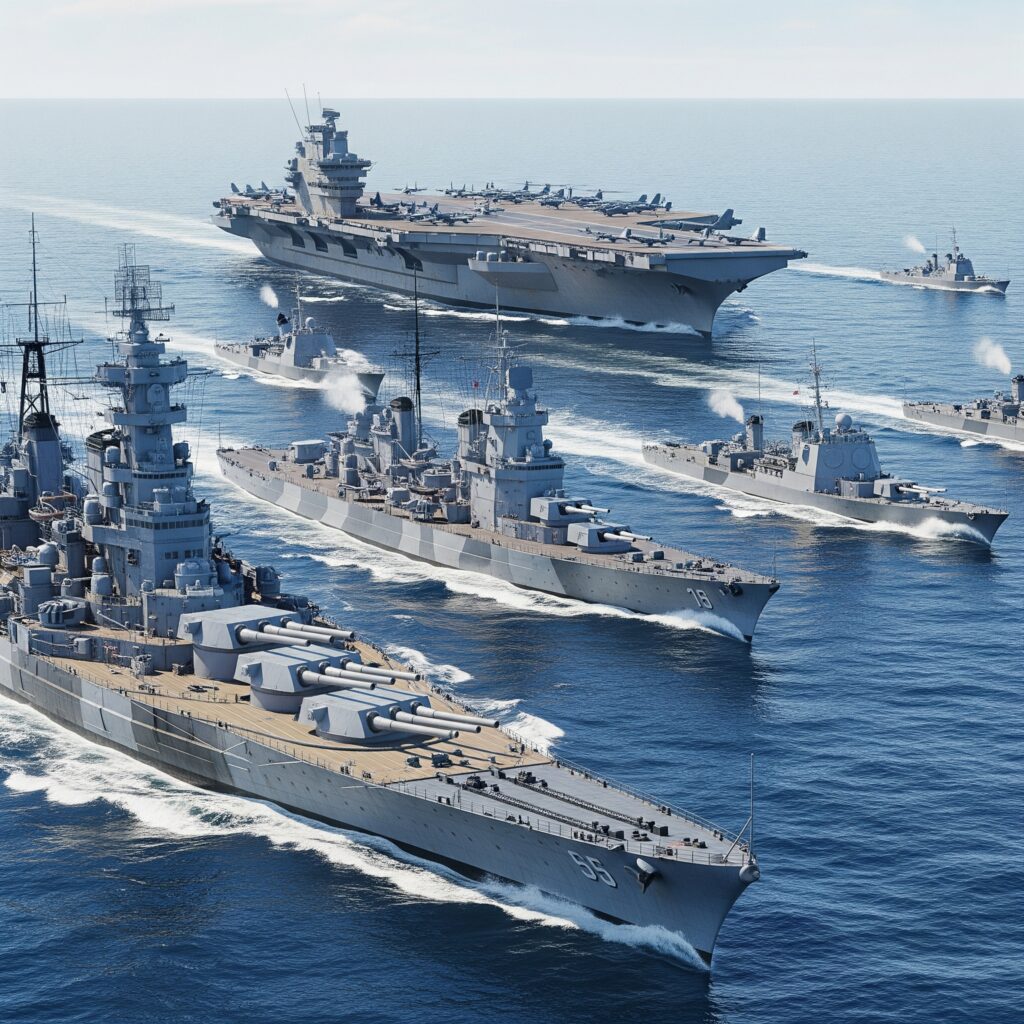
The Origins of World of Warships
The story of World of Warships is intrinsically linked to the success of its land-based predecessor, World of Tanks. Wargaming, a studio with roots in strategy games, had struck gold with its formula of accessible yet deep vehicular combat. The transition from armored fighting vehicles to naval vessels was a natural, albeit ambitious, next step. Development began in earnest with a clear vision: to create a naval combat game that was both historically authentic and enjoyable to play.
The developers faced the significant challenge of translating the slow, deliberate pace of real-world naval engagements into a compelling gameplay experience. Unlike the frenetic, close-quarters brawls of World of Tanks, naval battles are often decided by long-range gunnery, careful positioning, and strategic foresight. The team at Wargaming’s Lesta Studio in Saint Petersburg meticulously researched naval architecture, ballistics, and tactics from the first half of the 20th century. This dedication to historical accuracy is a cornerstone of the game’s identity, with many of the ships in the game being digital recreations of real-world vessels, some of which were only ever blueprints.
After a lengthy alpha and beta testing period, World of Warships was officially launched on September 17, 2015. The initial release featured two nations, the United States Navy and the Imperial Japanese Navy, with their distinct design philosophies and naval doctrines faithfully represented. The game was met with positive reviews, praised for its stunning visuals, strategic depth, and the sheer spectacle of its naval battles. In the years since its launch, World of Warships has undergone a continuous process of evolution, with the introduction of new nations, ship classes, game modes, and a host of technical and graphical improvements, solidifying its position as a titan of the free-to-play market.
Gameplay Mechanics
At its heart, World of Warships is a team-based, third-person tactical shooter. Players take command of a single warship and are pitted against an opposing team in a variety of game modes. The objective is typically to either destroy all enemy ships or to capture and hold key areas on the map. While the premise is straightforward, the gameplay is anything but.
Success in World of Warships hinges on a deep understanding of several core mechanics:
- Positioning and Angling: Unlike many shooters, movement in World of Warships is deliberate and has significant consequences. The positioning of your ship relative to the enemy and to islands on the map is paramount. Angling your ship’s armor towards incoming fire can cause shells to bounce harmlessly off your hull, while exposing your broadside (the “citadel”) can lead to devastating damage.
- Gunnery and Ballistics: The game features a sophisticated ballistics model that takes into account shell velocity, trajectory, and penetration. Players must lead their targets, accounting for their speed and direction, to land accurate shots at long ranges. Different shell types, primarily Armor-Piercing (AP) and High-Explosive (HE), have distinct uses and are effective against different types of targets.
- Concealment and Spotting: Every ship has a concealment rating, which determines how close an enemy vessel must be to detect it. This mechanic is crucial for destroyers, who rely on stealth to launch surprise torpedo attacks, and for all ships to disengage from a fight or set up ambushes. Understanding the spotting system, including the use of smoke screens and the impact of firing your main guns on your detectability, is a key skill.
- Consumables: Each ship comes equipped with a set of consumables that offer temporary advantages in battle. These can include Damage Control Party to extinguish fires and repair modules, Repair Party to regenerate lost health, Smoke Generator to create concealment, and Hydroacoustic Search or Surveillance Radar to detect hidden enemies. Knowing when and how to use these consumables can turn the tide of an engagement.
- Teamwork: Perhaps the most important mechanic of all is teamwork. A lone wolf, no matter how skilled, is unlikely to succeed against a coordinated team. Effective communication, focusing fire on priority targets, and supporting teammates with your ship’s unique abilities are essential for victory.
These mechanics combine to create a gameplay loop that is both challenging and deeply rewarding. Mastering the art of naval warfare in World of Warships is a long and continuous journey of learning and refinement.
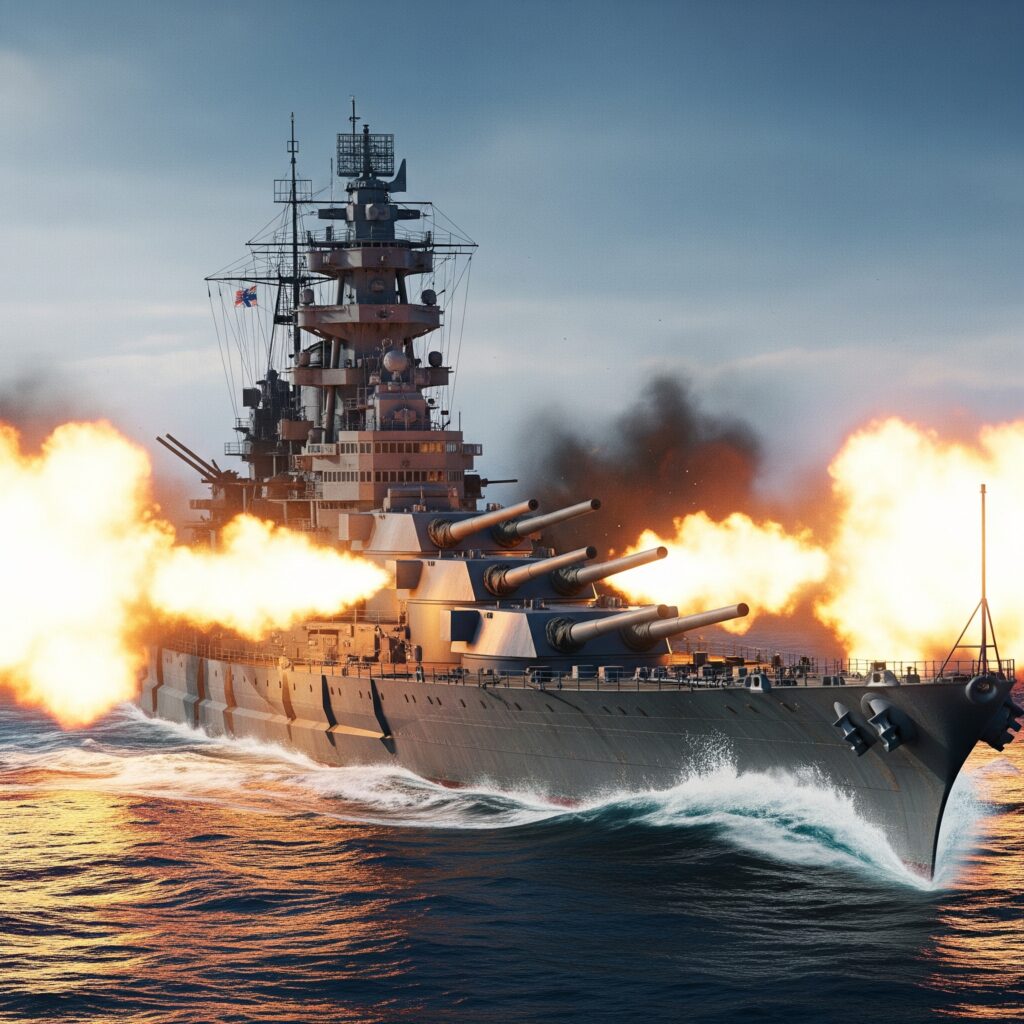
Ship Classes
The heart and soul of World of Warships are its meticulously recreated naval vessels. The game features five primary ship classes, each with its own distinct role, strengths, and weaknesses. Understanding these classes is fundamental to understanding the game’s strategic landscape.
Battleships
The titans of the seas, battleships are the heaviest and most heavily armed ships in the game. They boast massive-caliber guns that can inflict crippling damage on any target from extreme ranges. Their thick armor plating allows them to absorb significant punishment, making them the natural anchors of a fleet. However, their immense size and power come at a cost: battleships are generally slow, cumbersome, and have long reload times on their main batteries. Their primary role is to engage enemy battleships and cruisers at long range, drawing fire and creating opportunities for their more agile teammates.
Cruisers
Cruisers are the most versatile class in World of Warships. They occupy a middle ground between the brute force of battleships and the stealth of destroyers. Their armaments, typically a mix of rapid-firing main guns and torpedoes, make them adaptable to a variety of situations. Cruisers are further subdivided into light cruisers (CLs), which excel at hunting destroyers and setting fires with their high rate of fire, and heavy cruisers (CAs), which possess larger-caliber guns capable of dealing significant damage to other cruisers and even battleships. Many cruisers also come equipped with powerful consumables like Hydroacoustic Search and Surveillance Radar, making them invaluable for supporting their team and countering enemy destroyers.
Destroyers
The eyes and ears of the fleet, destroyers are the smallest, fastest, and stealthiest surface ships. Their primary weapon is the torpedo, a devastating projectile that can sink even the mightiest battleship with a well-aimed salvo. Destroyers are masters of concealment, able to sneak up on unsuspecting enemies, launch their deadly payload, and disappear back into the shadows. They are also crucial for capturing key areas and spotting enemy ships for their teammates. However, their light armor makes them extremely vulnerable to enemy fire, and a single mistake can lead to a quick trip back to the port.
Aircraft Carriers
Offering a completely different gameplay experience, aircraft carriers command the skies above the battlefield. Instead of directly engaging the enemy with guns and torpedoes, carrier captains launch and control squadrons of aircraft: attack aircraft armed with rockets, torpedo bombers, and dive bombers. This allows them to strike at any target on the map, bypassing island cover and providing invaluable spotting information for their team. The aircraft carrier rework significantly changed their gameplay from a real-time strategy (RTS) style to a more direct control scheme. Playing a carrier requires a keen sense of strategic awareness and the ability to manage multiple squadrons simultaneously.
https://track.wargaming-aff.com/click?pid=10580&offer_id=123
Submarines
The newest addition to the World of Warships arsenal, submarines introduce a new dimension of underwater warfare. These stealthy predators can submerge to avoid detection and launch devastating torpedo attacks. They possess the unique ability to “ping” their targets, which guides their acoustic homing torpedoes for increased accuracy. However, submarines have a limited dive capacity and are vulnerable to depth charges dropped by destroyers and some cruisers. Their introduction has been a topic of much debate within the community, adding a new layer of complexity and controversy to the game.
Maps and Game Modes
The naval battles of World of Warships unfold across a wide variety of maps, each a stunningly rendered depiction of a real or fictional naval theater. From the icy fjords of the North to the tropical archipelagos of the Pacific, these maps are more than just backdrops; they are integral to the strategic gameplay. The placement of islands, channels, and open water dictates lines of sight, provides cover, and creates tactical chokepoints.
The game features several primary game modes that determine the objectives of a battle:
- Standard Battle: The classic mode where each team has a single base. The goal is to either destroy all enemy ships or capture the enemy’s base.
- Domination: This mode features multiple key areas (typically three or four) scattered across the map. Teams earn points by controlling these areas over time. The first team to reach 1000 points, or the team with the most points when the timer runs out, wins. Destroying enemy ships also deducts points from the opposing team’s score.
- Epicenter: A variation of Domination with three concentric circular capture zones. Capturing the central zone provides the most points, but also exposes a ship to fire from all directions.
- Arms Race: A more dynamic mode where special buff zones spawn on the map. Capturing these zones grants temporary bonuses to your team, such as faster reloads or increased ship speed.
In addition to these standard modes, World of Warships also features a cooperative mode where players can team up to fight against AI-controlled bots, as well as a variety of special and seasonal game modes that introduce unique rules and objectives.
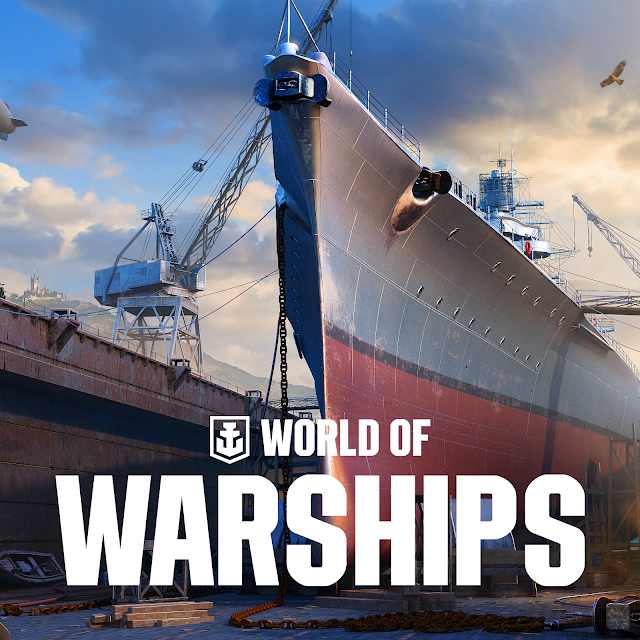
Combat Systems
The combat in World of Warships is a complex interplay of various systems that determine the outcome of every shell fired and every torpedo launched.
- Armor and Penetration: Every ship is protected by a detailed armor model with varying thicknesses across different sections. When a shell strikes a ship, the game calculates whether it has enough penetration to pass through the armor at that point and angle of impact. A successful penetration can result in significant damage, while a failure to penetrate will result in a ricochet or a shattered shell.
- Citadel Hits: The most vital areas of a ship, such as the engine rooms and magazines, are protected by a heavily armored box known as the citadel. A shell that penetrates the outer armor and then the citadel armor will inflict massive damage, often taking a huge chunk out of a ship’s health pool.
- Overmatch: If a shell’s caliber is more than 14.3 times the thickness of the armor it hits, it will automatically penetrate regardless of the angle of impact. This “overmatch” mechanic is a key factor in battleship-on-cruiser engagements.
- Fires and Flooding: High-Explosive (HE) shells have a chance to start fires on a target. Fires cause continuous damage over time and can be extinguished using the Damage Control Party consumable. Torpedo hits have a chance to cause flooding, which also deals damage over time and slows the ship down.
- Anti-Aircraft (AA) Defense: Ships are equipped with a variety of anti-aircraft guns that automatically engage enemy aircraft. The effectiveness of a ship’s AA defense is determined by the number and type of its AA mounts, and can be temporarily boosted by the Defensive AA Fire consumable.
- Torpedo Warfare: Launching torpedoes requires careful aim and prediction of the target’s movement. Torpedoes have a set speed, range, and detection range. Players can launch torpedoes in narrow or wide spreads, and some destroyers have the option to launch single torpedoes.
These systems, while complex, create a combat experience that is both visceral and deeply strategic. Learning the nuances of these mechanics is a key part of becoming a skilled captain.
Upgrades and Progression
The journey in World of Warships is one of constant progression and improvement. Players start with Tier I ships and gradually work their way up the tech trees to the powerful Tier X vessels. This progression is facilitated by a multi-layered upgrade system.

- Modules: Each ship can be improved by researching and mounting upgraded modules. These can include better hulls for increased hit points and improved rudder shift, more powerful main guns with better range or reload speed, and upgraded fire control systems for improved accuracy.
- Upgrades: In addition to modules, ships can be fitted with a variety of upgrades that provide passive bonuses to their combat characteristics. These upgrades are installed in dedicated slots, with more slots becoming available at higher tiers. They can improve everything from main battery survivability and aiming speed to concealment and engine power.
- Commander Skills: Every ship is helmed by a commander who earns experience in battle and can learn a variety of skills. These skills provide significant bonuses and can be tailored to enhance a ship’s specific strengths or mitigate its weaknesses. Commanders can be retrained for new ships and can accumulate up to 21 skill points, allowing for highly specialized builds.
- The Research Bureau: For veteran players who have reached the top of multiple tech trees, the Research Bureau offers a unique form of endgame progression. Players can choose to reset a fully researched tech tree line, which allows them to re-grind the line and earn Research Points. These points can then be used to unlock unique ships, special upgrades, and other valuable rewards in the Armory.
This progression system provides a strong incentive for continued play, with new ships and powerful upgrades always on the horizon.
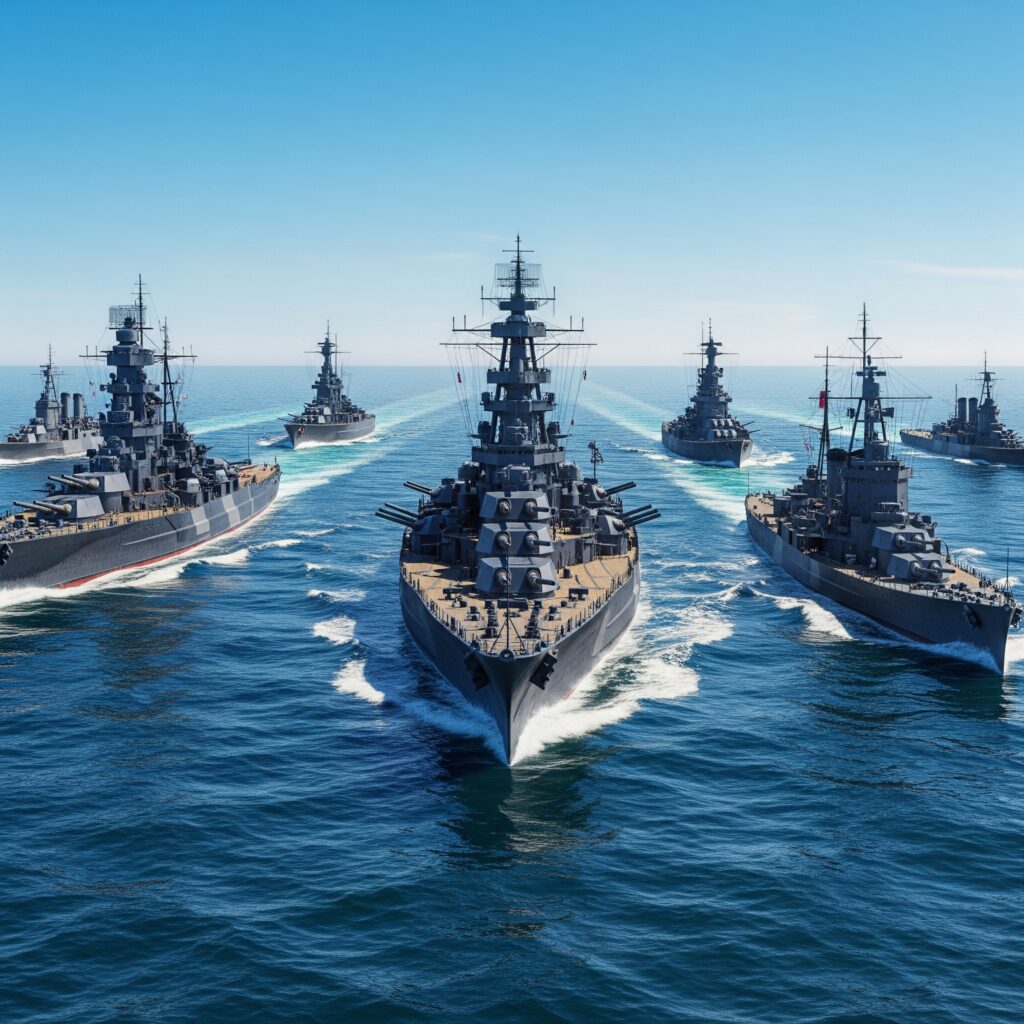
Nations and Tech Trees
One of the greatest strengths of World of Warships is its vast and diverse roster of ships from the world’s major naval powers. Each nation has its own tech tree, representing its unique approach to warship design and naval doctrine.
- United States Navy (USN): Known for their well-rounded ships with strong anti-aircraft defenses and powerful, “super-heavy” AP shells on their later battleships. Their cruisers are versatile, and their destroyers often feature rapid-firing guns.
- Imperial Japanese Navy (IJN): Famed for their powerful and long-range torpedoes on their destroyers and cruisers. Their battleships are known for their large-caliber guns and impressive accuracy at range.
- Kriegsmarine (Germany): German ships often feature excellent armor protection, particularly their “turtleback” armor scheme on battleships which makes them very resistant to citadel hits at close range. They also have powerful secondary batteries and access to Hydroacoustic Search on many of their ships.
- Royal Navy (United Kingdom): British ships are known for their specialized HE shells with high damage and fire-starting potential. Their light cruisers have a unique smoke generator and repair party combination, making them very survivable. Their battleships have a potent Repair Party.
- Marine Nationale (France): French warships are often characterized by their high speed and the Engine Boost consumable, even on their battleships. Their cruisers and destroyers have unique gun characteristics and powerful torpedoes.
- Regia Marina (Italy): The Italian navy is defined by its unique Semi-Armor-Piercing (SAP) shells, which deal high damage to lightly armored targets. They also have a special Exhaust Smoke Generator that allows them to create concealment while at high speed.
- Voyenno-Morskoy Flot (Soviet Union): Soviet ships are often designed for aggressive, close-to-medium range engagements. Their battleships have thick armor and powerful guns, while their cruisers have high shell velocities and access to long-range radar.
- Pan-Asia: A collection of ships from various East and Southeast Asian navies, the Pan-Asian tech tree is notable for its deep-water torpedoes, which cannot hit destroyers but have low detectability.
- Commonwealth, Pan-America, and Europe: These tech trees feature ships from a variety of other nations, each with their own unique flavors and gameplay styles.
The continuous addition of new nations and ship lines ensures that the game’s meta is constantly evolving and that there is always something new for players to explore.
Graphics and Sound Design
From its inception, World of Warships has been a visually stunning game. The development team’s commitment to historical accuracy extends to the meticulous modeling of each warship, with every gun turret, porthole, and rivet recreated in stunning detail. The game runs on the BigWorld engine, which has been heavily modified over the years to support the game’s unique requirements.
The game’s graphics have seen significant improvements since its launch. Water rendering has become more realistic, with dynamic waves and foam effects. The lighting system has been overhauled to create more dramatic and immersive environments. The weather effects, from gentle rain to raging typhoons, not only add to the visual spectacle but also have a tangible impact on gameplay.
The sound design of World of Warships is equally impressive. The thunderous roar of a battleship’s main battery, the sharp crack of anti-aircraft fire, the chilling sound of an incoming torpedo warning, and the triumphant blast of a ship’s horn all contribute to an immersive and visceral soundscape. The original musical score, composed by Artur Tokhtash, perfectly captures the epic scale and dramatic tension of naval warfare, with dynamic tracks that adapt to the intensity of the battle.
Community and Events
A thriving community is the lifeblood of any online game, and World of Warships is no exception. Wargaming actively fosters its community through a variety of channels, including official forums, social media, and a popular Discord server. These platforms provide a space for players to discuss strategies, share their experiences, and provide feedback to the developers.
The game also features a regular cadence of in-game events that keep the experience fresh and engaging. These events often tie into historical anniversaries or introduce new game modes and content. They provide players with opportunities to earn unique rewards, such as special ships, commemorative flags, and valuable in-game resources.
Clans and Ranked Battles
For players seeking a more competitive and collaborative experience, World of Warships offers a robust clan system. Joining a clan allows players to team up with like-minded individuals, participate in clan-exclusive activities, and earn special bonuses. The pinnacle of clan gameplay is Clan Battles, a seasonal competitive mode where teams of seven players from different clans face off in a bid for supremacy and valuable rewards.
Ranked Battles provide a competitive ladder for individual players to test their skills. Players progress through a series of ranks by winning battles, earning stars for victories and losing them for defeats. Ranked Battles are a great way for players to challenge themselves, improve their gameplay, and earn exclusive rewards.
Seasonal Events and Collaborations
To keep the gameplay experience fresh and exciting, World of Warships regularly hosts seasonal events and has engaged in a number of high-profile collaborations. These events often introduce unique game modes, new ships, and themed content.
Past collaborations have included tie-ins with popular anime series like Azur Lane and High School Fleet, bringing their iconic characters and ship designs into the world of World of Warships. The game has also featured collaborations with the Warhammer 40,000 universe, introducing grimdark-themed ships and commanders, and even with the legendary rock band Megadeth. These collaborations, while sometimes surprising, offer a fun and engaging change of pace from the game’s historical setting.
eSports and Competitive Play
While not as prominent as in some other online games, World of Warships has a dedicated esports scene. The premier competitive event is the “King of the Sea” tournament, a community-organized event that has grown to become the game’s official world championship. The tournament features the best clans from around the world competing for a share of a prize pool and the coveted title of King of the Sea. The strategic depth of World of Warships makes for compelling viewing, with matches often decided by razor-thin margins and brilliant tactical plays.
Economic System and Monetization
As a free-to-play game, World of Warships relies on a complex economic system and a variety of monetization methods to generate revenue. This has been a source of both praise and criticism from the community.
Free-to-Play vs Premium
It is entirely possible to play and enjoy World of Warships without spending any real money. The core gameplay is accessible to everyone, and players can progress through the tech trees to Tier X through dedicated play. However, the game does offer a premium account option that provides significant bonuses to experience and credit earnings, which can significantly speed up the progression grind.
Doubloons, Credits, Coal, and Steel
The game features several in-game currencies:
- Credits: The primary in-game currency, earned by playing battles. Credits are used to purchase new ships, modules, and upgrades.
- Doubloons: The premium currency, which can be purchased with real money. Doubloons can be used to buy premium account time, premium ships, and to convert elite commander XP and ship XP into free XP.
- Coal: A special resource earned by completing daily missions and participating in events. Coal can be exchanged in the Armory for a variety of items, including premium ships, special commanders, and unique upgrades.
- Steel: The most valuable resource, primarily earned through participation in competitive modes like Clan Battles and Ranked Battles. Steel is used to acquire some of the most powerful and sought-after ships in the game.
This multi-currency system provides a variety of ways for players to acquire new content, both through gameplay and through real-money purchases.
Modding and User Interface Customization
World of Warships supports a healthy modding community that creates a wide range of user interface (UI) modifications. These mods can provide additional information in battle, such as more detailed team lineups and improved crosshairs, or they can change the visual appearance of the game with custom ship skins and port interfaces. Wargaming provides an official ModStation application that allows players to easily install and manage a curated selection of popular and approved mods.
Criticism and Controversies
Like any long-running online game, World of Warships has had its share of criticism and controversies.
- Aircraft Carrier Rework: The complete overhaul of aircraft carrier gameplay in early 2019 was one of the most divisive changes in the game’s history. While the developers aimed to make the class more accessible and less oppressive, many veteran players lamented the loss of the RTS-style gameplay and felt that the new system lacked strategic depth.
- Submarine Implementation: The introduction of submarines into the main game modes has been met with a significant amount of negative feedback from a vocal portion of the community. Concerns have been raised about their stealthy nature, the effectiveness of their homing torpedoes, and the perceived lack of effective counterplay for surface ships.
- Monetization Practices: Wargaming has faced criticism over its monetization strategies, particularly the use of loot boxes (disguised as “containers”) and the increasing prevalence of time-limited events that encourage spending to acquire new content. A major community backlash in 2021, sparked by the handling of a new ship release, led to many prominent community contributors leaving the official program in protest.
These controversies highlight the ongoing tension between the developers’ vision for the game and the desires of its passionate player base.
Tips for Beginners
For new players, the world of World of Warships can be daunting. Here are a few tips to help you get started:
- Start with Cruisers: Cruisers are a great starting class as they offer a good balance of firepower, maneuverability, and survivability, providing a good introduction to the game’s core mechanics.
- Learn to Angle: The single most important defensive skill is angling your armor. Always try to keep your ship pointed towards the enemy to maximize your chances of bouncing shells.
- Use the Minimap: The minimap is your most important tool. Keep a close eye on it to track enemy movements, see where your teammates are, and maintain situational awareness.
- Don’t Show Your Broadside: Exposing the side of your ship to an enemy battleship is a recipe for disaster.
- Be Patient: World of Warships is a game of patience and positioning. Don’t rush into the fray. Take your time, assess the situation, and choose your engagements wisely.
Advanced Strategies for Veterans
For experienced players looking to take their game to the next level, here are some advanced strategies:
- Crossfires: Work with your teammates to create crossfires, forcing enemy ships to expose their broadside to at least one of you.
- Map Control: Understand the key strategic locations on each map and work with your team to control them.
- Consumable Management: Use your consumables strategically to gain an advantage in key moments of the battle.
- Division Play: Playing in a division with two other players allows for a much higher level of coordination and tactical play.
- Understand the Meta: Keep up with the latest balance changes and understand which ships are currently strong in the game’s meta.
Developer Support and Updates
Wargaming provides ongoing support for World of Warships through regular updates that introduce new content, balance changes, and bug fixes. The development team communicates with the community through a variety of channels, including a development blog, live streams, and developer Q&A sessions. While communication has not always been smooth, there is a clear effort to engage with the player base and address their concerns.
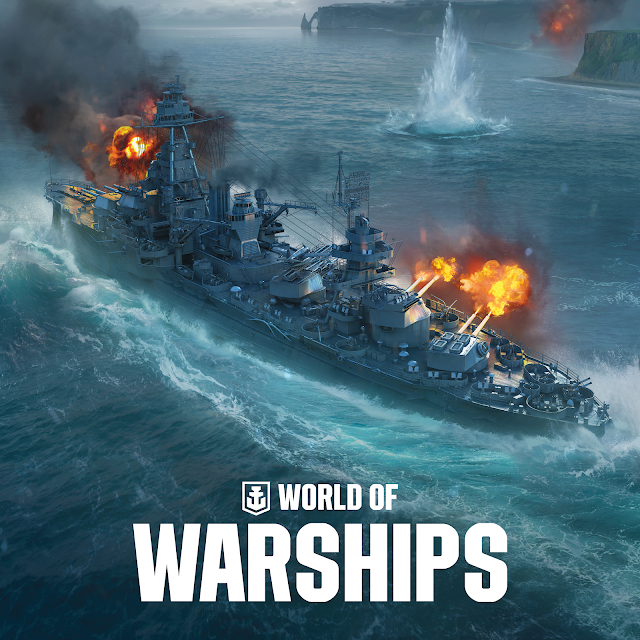
World of Warships: Legends (Console Version)
For players on PlayStation and Xbox, World of Warships: Legends offers a streamlined and accessible version of the World of Warships experience. While it shares the same core gameplay mechanics as the PC version, Legends features faster-paced battles, a simplified progression system, and a smaller roster of ships. The commander system is also different, with commanders having a more significant impact on a ship’s performance. Legends is a great option for players who prefer a more arcade-like and less time-intensive naval combat experience.
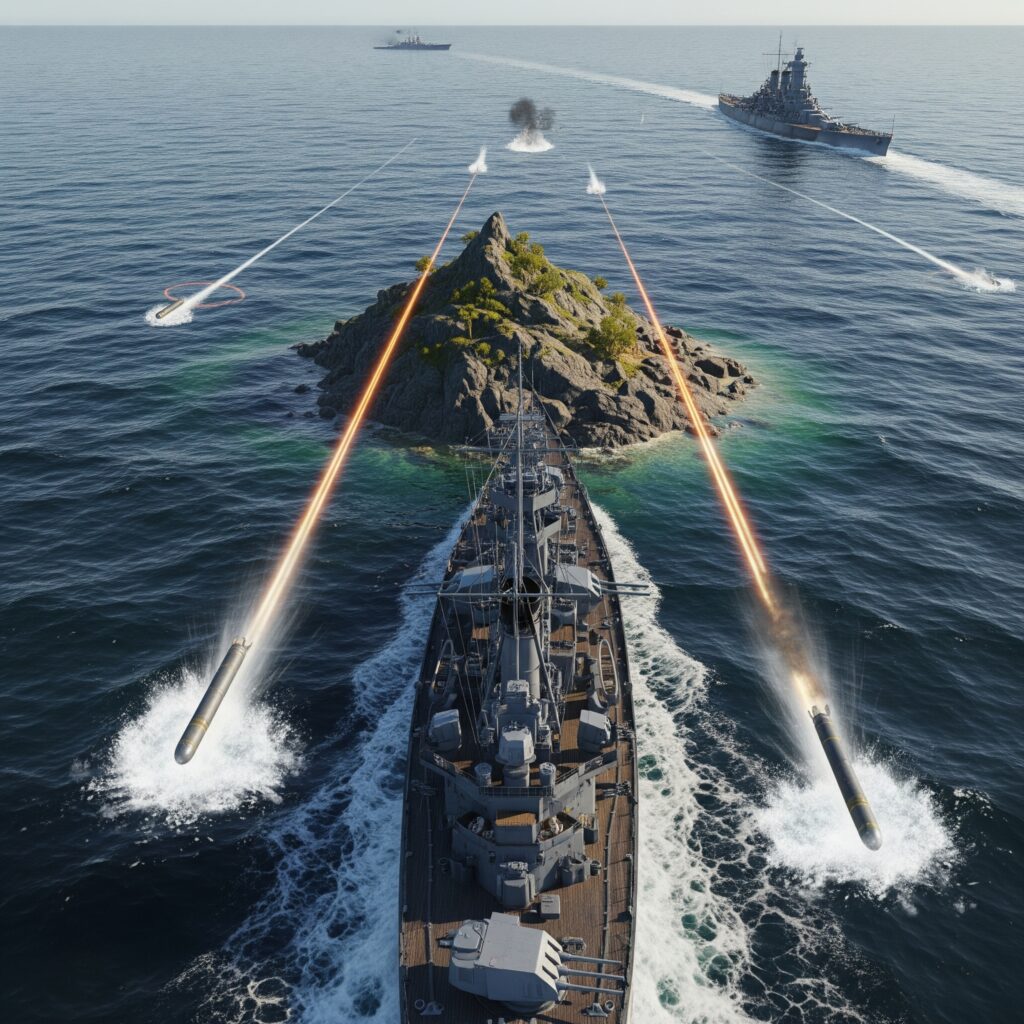
Conclusion and Future Outlook
For nearly a decade, World of Warships has provided a captivating and deeply rewarding naval combat experience. Its commitment to historical accuracy, stunning visuals, and complex gameplay have earned it a dedicated global following. While the game has faced its share of challenges and controversies, its enduring appeal is a testament to the strength of its core design.
Looking to the future, the seas of World of Warships show no signs of calming. With the continuous introduction of new ships, nations, and game modes, the game is constantly evolving. The developers’ willingness to experiment with new ideas, while sometimes controversial, ensures that the experience remains fresh and engaging for veterans and newcomers alike. As long as there are stories of naval heroism to be told and epic battles to be fought, the guns of World of Warships will continue to roar, inviting players from all corners of the globe to explore the high seas and forge their own legends in a world of steel and fire.